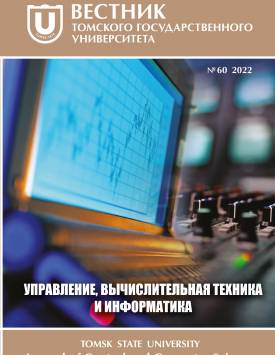Technique of data structuring in semantic models of the “Entity-Relationship” type
Database designing of complex corporate systems is not complete without the use of a semantic technique, and, therefore, one or another semantic model. Models of the "Entity-Relationship" type are the most widespread in this class. Most publications on the ER model assume that the designer will, on a whim, determine the appropriate forms of data representation. The problem is aggravated by the fact that one (and only one) of the three possible forms should be chosen for each phenomenon of the subject area. If we take as a basis the terms and definitions of the author of the model P. Chen and look at them from the point of view of logic, we get the following consistent conceptual basis. An entity is an abstract representation of a single application domain (AD) object. This abstraction is built on the basis of a certain notion about things, which is essential from the point of view of the AD problems. Each notion defines its own entity set, the intension of which is the content of the concept, and the extension is its scope. A relationship is a single instance of a relation (in a logical sense) between entities. For relationship sets, not the notion about things is used (as with entities), but the notion about n things. A relationship set can be viewed as a mathematical relation defined on n entity sets in the general case, and a relationship as a tuple of this relation with n entities as elements. Each entity in a relationship plays a specific role, a function that is common to all entities of that role. Information about an object or a relationship between objects is obtained by observing or measuring the characteristics that are essential for a particular notion, and is expressed by a set of “attribute-value” pairs. Abstract values are classified purely syntactically into different value sets. Thus, a value set in this model is what is sometimes called a domain in other models - the area of admissible attribute values. An attribute in the ER model is formally defined by Chen as a mapping that associates entities or relationships of some set with single values or tuples of values. When choosing a data form for a single phenomenon, one should be aware of the possible trialism (the presence of three forms of representation in ER model) of the phenomena of the modeled world. The three forms of data are the three possible kinds of signs in this model. It is necessary to generate such data structures that would optimally take into account two mutually contradictory criteria - the informativeness of data required by business processes and the efficiency of their storage and manipulation. In the vast majority of data models and DBMS, when designing a database schema, it is necessary to make a choice in favor of only one of the possible forms for each phenomenon. The information needs of the AD business processes are decisive. The procedures for designing entity sets and relationships are similar and consist of the steps of defining the corresponding notion, a common noun as its name, and extracting meaningful attribute mappings. Since each relationship set corresponds to the notion about n objects, special attention must be paid to the construction of the necessary and sufficient system of entities that make up one relationship of each considered relationship sets. On the one hand, it must include all objects that determine the sense of the notion about n objects, on the other hand, it should not contain objects that can be excluded from the content of the concept without loss of information. The second difficulty in designing relationship sets is to distinguish between the entities involved in a relationship and the values of the relationship's characteristics. One of the important skills that a data schema designer should have is the ability to choose short but precise names for structural elements. Namely, by reading them in a diagram, any person should be able to recreate the semantic picture of the modeled world-concepts of interest about objects and n objects. In the ER model, schema elements such as entity sets, relationship sets, roles, and attributes can have semantically meaningful names. Value sets combine structurally uniform elements that do not have semantics; they have standard abstract names-strings, integers, etc. The article did not focus on certain notations and tools of the ER model. The given definitions and methods can be successfully applied in each of them. The author declares no conflicts of interests.
Keywords
ER model, design, data schema, methodologyAuthors
| Name | Organization | |
| Babanov Alexey M. | Tomsk State University | babanov2000@mail.ru |
References

Technique of data structuring in semantic models of the “Entity-Relationship” type | Vestnik Tomskogo gosudarstvennogo universiteta. Upravlenie, vychislitelnaja tehnika i informatika – Tomsk State University Journal of Control and Computer Science. 2022. № 60. DOI: 10.17223/19988605/60/10
